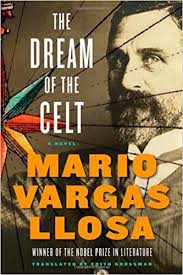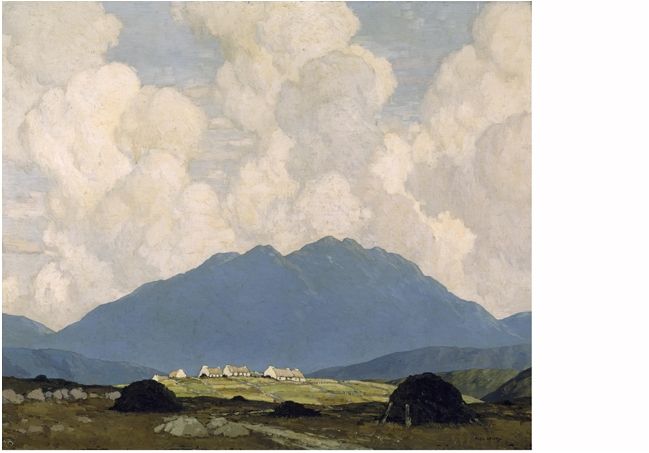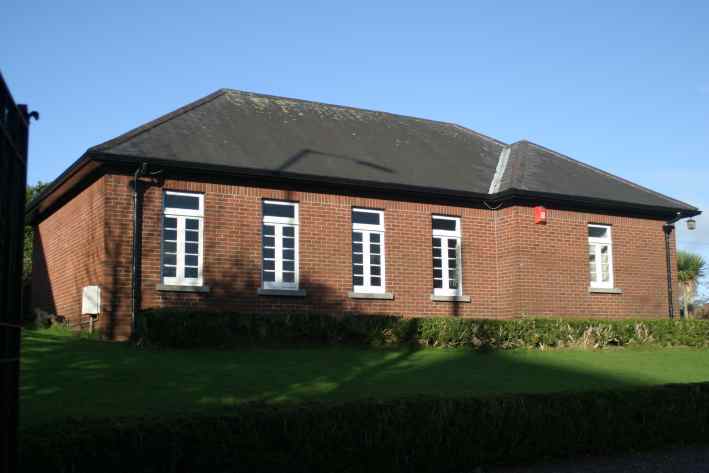
Small World: Ireland 1798-2018 Seamus Deane
When Seamus Deane died on May 13th 2021 it was a sad day for Ireland, opening up a void similar to that left by his friend, Seamus Heaney, nearly eight years ago. Deane spent his 81 years becoming, and then being, an Irish writer: one whose sensibility was closely aligned with that of the young republic. The events, a century before his death, surrounding the Government of Ireland Act of 1921, provided the context for the entirety of Deane’s life and he devoted his work to illuminating that history through his own prose and poetry and his critiques of other writers.

In 1996 he completed Reading in the Dark, an autobiographical novel consisting of fragments of memoir and folklore woven together to fabricate a thrilling display of magic realism. Much of what happens in Reading in the Dark is incomprehensible to the young narrator and, indeed, universally unknowable. Thus the reader also must grope in the dark to piece together the political, sectarian and historical meaning of the vignettes. Born in 1940, Deane grew to manhood in Derry before travelling to Belfast for his first degree and thence to Cambridge for his doctorate.
As an academic Deane spent the majority of his career at University College Dublin. He was, from 1981 a director of Field Day, for whom he edited several publications and a central figure in Irish letters, a member of both the Royal Irish Academy and Aosdána. In his critical work Deane deployed a post-colonial approach and as a poet, author of three volumes, he focused on violence and history. In the poem ‘Send War in Our Time, O Lord’ that ‘history is personal; the age, our age’. Deane’s life and work provide a comprehensive reading of the years of Ireland’s freedom and so it is apposite that fewer than 14 days after his death Cambridge University Press was able to launch his first book in 15 years, Small World.

Of the oxymoronic title John Banville writes ‘Nothing small here, only the broadest view and the deepest insight. Ave magister’. It is impossible not to revere this anthology even without opening it. Deane’s face stares out from a black and white cover, piercing eyes within a granite-hewn face, a set mouth and thoughtful brow. There is, ironically, a similarity to the physiognomy attributed by the youthful Deane to ‘Prods’, that is ‘thin mouth, blue nose, pinched disapproving faces with starched expressions’.
In his ‘Acknowledgments’ Deane explains that Joe Cleary ‘persuaded me to make this selection of essays’ and Cleary goes further in providing a foreword. One of Ireland’s foremost post-colonial theorists himself, Cleary, now of Yale University, strives to place Deane in his rightful position as the world’s most notable Irish literary critic.
Ireland is not the easiest place to be acknowledged. Even if the great political rift, separating a portion of the United Kingdom from the rest of the island, is set aside there remain bitter struggles and rivalries between counties and regions. This phenomenon is addressed in Chapter 14, ‘Wherever Green is Read’. In this witty, acerbic treatise Deane assesses the 75th anniversary of the Easter Rising in 1916. Looking back from recent centenary commemorations Deane’s remark seems prophetic: ‘the revisionists are now themselves more vulnerable to revision because their pseudo-scientific orthodoxy is so obviously tailored to match the prevailing political climate that its claims to “objectivity” have been abandoned as disguises no longer needed’.
It is difficult for public intellectuals such as Deane to be fairly judged if, as Cleary insists, their peers purposefully corral them within, for example, the term ‘nationalist’. Cleary is on a mission to cement Deane, and his reputation, in the minds of his compatriots as a champion of Irish writing within the honourable context of European intellectual traditions.
It is heart-warming to witness these two giant Irish academics appreciating each other in such a generous manner and it becomes an emotional synchronicity that the book Cleary proposed and drove to fruition was finished in time to be published whilst celebrations of Deane’s life are still echoing in the halls and libraries of universities in Europe, the United States and further afield.
Mealy-mouthed cavillers should now be silenced as they turn to Small World to kick-start their reunion with Deane’s work: this selection of essays, chosen by their author, displays a ‘taster menu’ of his academic output covering, as the subtitle reveals, Ireland, 1798-2018. Cleary’s preamble provides the signposts and stepping-stones needed to begin to understand Deane’s worth.

Piles of these grey, gravestone-like tomes will be populating librarians’ trolleys in every university in the United Kingdom and the United States. Shipments will be unpacked in Australia and New Zealand on their journey to student bookshops on campuses throughout the archipelago. Lecturers in departments of Irish Writing in Eastern Europe and Japan will scramble to buy their own copies and read them in time for debates with colleagues and students in canteens and seminar rooms. Pencils will be sharpened ready to scratch angry or affirmative marginal notes, whilst computer files await screeds of characters assembling words to argue with Cleary or Deane or both.
For inclusion in Small World Deane chose essays on, for example, protestants Burke and Tone, novelists Joyce and Bowen and poets Yeats and Lavin. His analyses are commanding: strong arguments not to be assailed unless by heavy artillery and prolonged shelling. The word ‘dogmatic’ presents itself as a descriptor of Deane’s work, although it could happily be replaced with ‘authoritative’.

Writing about Anna Burns in the chapter ‘Emergency Aesthetics’ he states that Milkman ‘is the most comprehensive attempt in Irish fiction to represent a society that is almost entirely in a state of emergency’. Deane narrates a section of Burns’s 2018 novel in this way: ‘the occupying army eventually kills the bad Milkman, having killed four others in error before that and wounded the fatherly milkman in its penultimate display of lethal incompetence’. Here is the familiar voice of Deane. The boy, whose English essay was overlooked by his teacher in favour of another boy’s, learnt his lesson. Convolution of phrasing and intricate diction do not produce good writing. Plainness and simplicity do. It is difficult for Deane, a man who devoted his life to the obfuscations and split hairs of academic thinking, to maintain his passion for accessibility. But clarity shines through the occlusion when he turns his attention to Milkman.
Burns’s lucid prose attracts him but he is also attuned to her for reasons which have nothing to do with her style and everything to do with her choice of location in place and time. Set in the Belfast of the late 1970s, whilst the Troubles were at their height, the political violence that Burns chronicles in Milkman is the bread and butter of Deane’s lifelong focus. Deane quotes a passage ‘you couldn’t just die here, couldn’t have an ordinary death here, not anymore, not by natural causes, especially not after all the other violent deaths taking place in the district now. It had to be political, had to be about the border, meaning incomprehensible’.

Deane is fascinated by Burns’s creation of a ‘dystopia, a district in a time warp’. Her novel must return him to his own student days in the city and beyond that to his childhood and youth in Derry where he lived the ‘incomprehensible’ life that he recounts in Reading in the Dark.
Deane declares Milkman an ‘aesthetic success’, stating that its political message, the ‘occupying forces’ eventually killed the baddy, is not important. He seems to enjoy the ‘comic undertow’ and cartoonish nature of the Booker prize winner comparing it to Martin McDonagh’s Leenane trilogy and Patrick McCabe’s Butcher Boy. These pieces he thinks ‘naturalise violence making it a glamorous commodity’ culminating in the understanding that violence has saturated both social and political worlds.

Seamus Heaney is lauded, and teased, in the chapter, ‘The Famous Seamus’ but having predeceased Deane, the elder Seamus cannot now eulogise his former schoolmate. If he could, doubtless he would repeat T.S. Eliot’s words to Ezra Pound: il miglior fabro – the better craftsman.
Works cited
Burns, A. Milkman. Faber & Faber. 2018.
Deane, S. Reading in the Dark. Jonathan Cape. 1996.
…- Small World: Ireland 1798-2018. Cambridge University Press. 2021.
A version of this review was first published on pages 33 and 34 of the Weekend section of the Irish Examiner on 3rd July 2021. It is reproduced here by permission of the Editor.










 Protestant and Irish: the minority’s search for place in independent Ireland
Protestant and Irish: the minority’s search for place in independent Ireland



